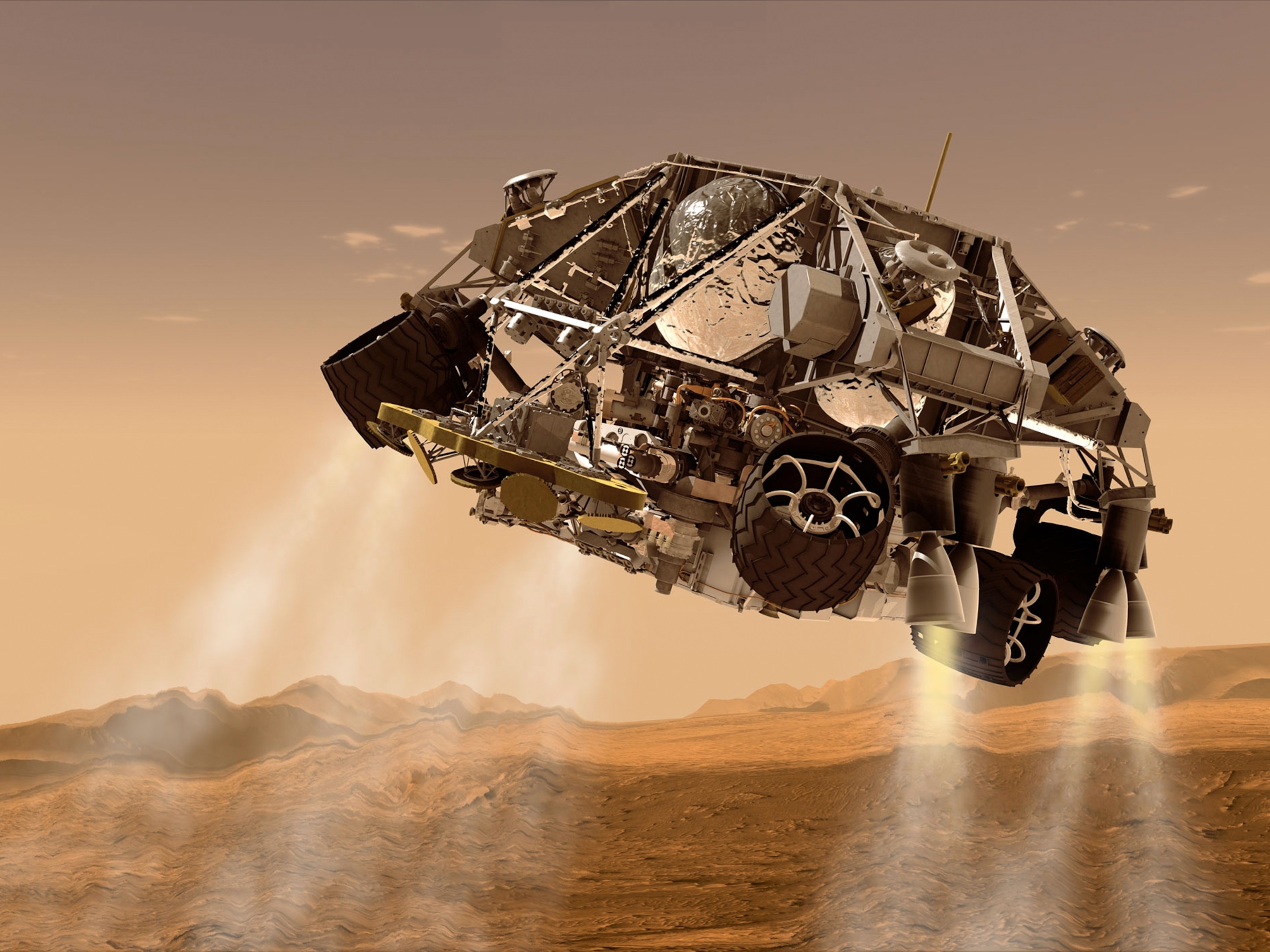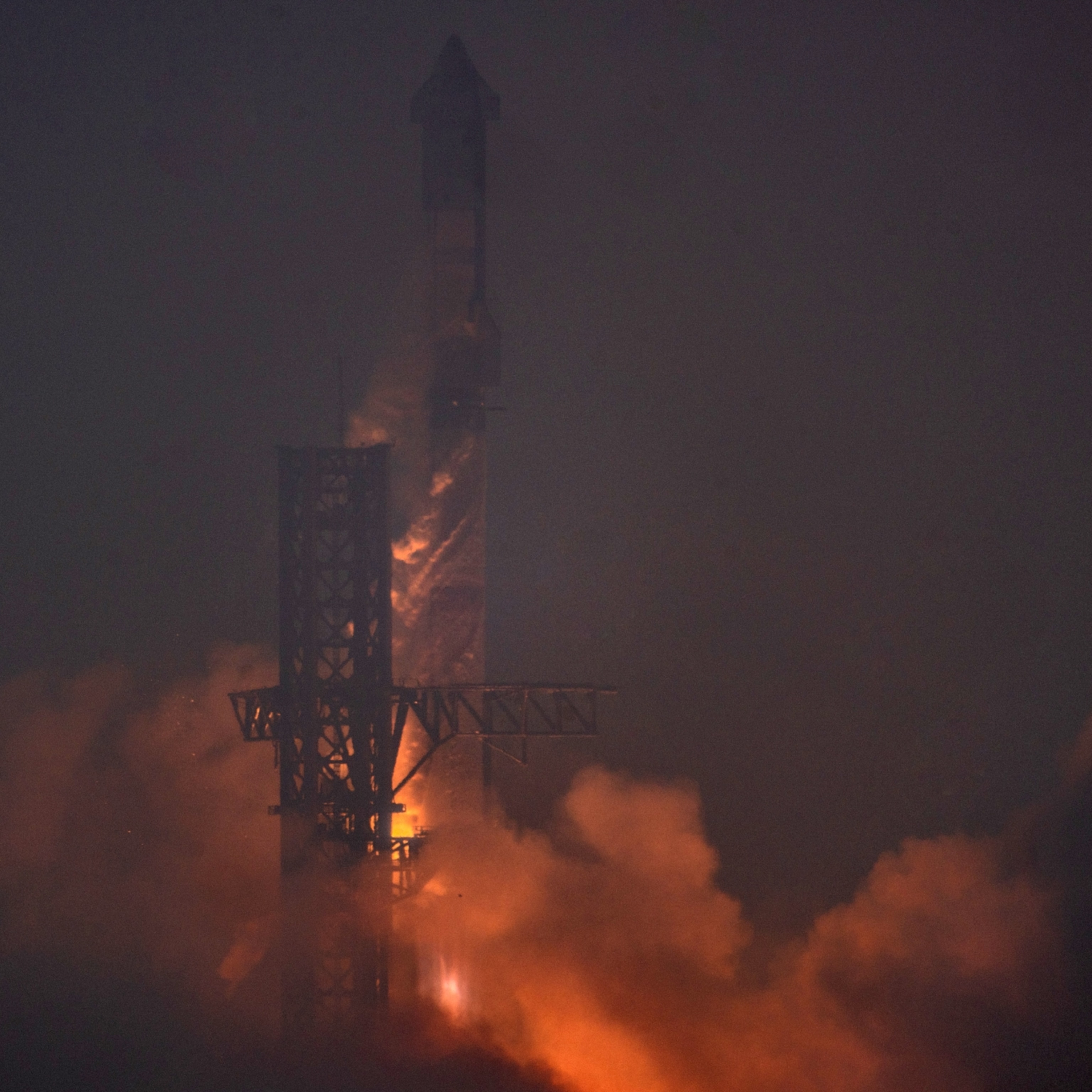
Mars Rover Landing Tonight: What Could Go Wrong
NASA experts pinpoint two scariest moments in "seven minutes of terror."
It's been called seven minutes of terror. But to NASA experts, the Curiosity rover's Mars landing—set for 1:31 a.m. ET Monday—is more a series of distinct transitions, each a potential mission killer.
To go from hypersonic space capsule to naked, wheels-down rover, "the vehicle reconfigures itself seven times," said mechanical-systems engineer Tommaso Rivellini, who helped design the landing procedure for Curiosity, formally known as the Mars Science Laboratory.
"There are many things that have to go right. If any one thing goes wrong, we've pretty much lost the vehicle," added Rivellini of NASA's Jet Propulsion Laboratory (JPL) in Pasadena, California.
Among those make-or-break moments, two stand out as particularly likely to keep engineers on the edge of their seats, Rivellini and JPL spokesperson Steve Ebelhar said.
(Related: "Sky Show Sunday—Planets to Align for Mars Rover Landing.")
1. Parachute Deployment
After Curiosity—encased in upper and lower heat shields—breaches the Martian atmosphere, friction will slow the capsule from its interplanetary cruising speed of 13,200 miles [21,200 kilometers] an hour to 1,050 miles (1,700 kilometers) an hour, according to NASA.
At this point the 60-foot-wide (18-meter-wide) parachute within the Mars rover's upper heat shield should deploy.
"Parachute deployment is always really, really nerve-wracking," Rivellini said.
One reason: Though it's the largest ever sent to another planet, Curiosity's 100-pound (45-kilogram) chute weighs only about one-seventieth as much as the craft it's intended to slow—which will result in huge strains when the chute extends and its cables snap taught.
"We generate 60,000 pounds [27,200 kilograms] of force with this little parachute," Rivellini said.
JPL spokesperson Ebelhar agreed, saying, "We have guys jumping out of airplanes all the time, but they always bring a backup. [On Curiosity] there's no backup."
Even assuming the chute can handle the strain, there are a lot of things that could go wrong, Rivellini said.
The parachute might simply fail to open, he said, or it could open inside out.
Also, if the falling capsule fails to maintain a flat, level position, it could plummet too fast through the atmosphere. The higher friction "could melt the parachute or literally blow it up. It's a very, very thin nylon fabric, thinner than a windbreaker," Rivellini said.
What's more, the parachute could "flutter around or not open in time. If it takes 10 or 15 seconds to open instead of the 1 second it's supposed to take, we might not be able to make that [lost braking time] back up."
Mars-landing parachutes, Rivellini added, haven't changed since NASA'S Viking mission in 1976—not because there's no desire to improve the technology, but because it costs a hundred million U.S. dollars to design wind-chamber experiments capable of simulating the high-speed gusts in the thin Martian atmosphere.
But, he said, the 1970s technology works. "We have the heritage from the Viking program that showed that parachutes can open under [Martian] conditions," he said.
(Explore an interactive time line of Mars exploration in National Geographic magazine.)
2. "Sky Crane" Rover Drop
After the parachute opens (fingers crossed), the Mars rover will jettison its lower heat shield, exposing Curiosity's radar equipment—essential for a controlled landing.
Soon after, explosive bolts should be automatically triggered, separating the upper heat shield and parachute from the rover—and exposing a craft capping Curiosity like a turtle shell: the "sky crane."
The free-flying crane will fire downward rockets that should allow it to hover over Mars, helicopter style.
Then comes the second most stressful moment, according to Rivellini and Ebelhar.
About six stories above the surface, the crane should begin loosening its grip on tethers attached to the rover, lowering it to the surface. (Car-size Curiosity is simply too big to safely land in a bouncing cocoon of "air bags," as the smaller Mars Exploration Rovers did in 2004.)
But if wind and dust interference prevents the radar system from accurately confirming altitude and speed, the rover could come down faster than the planned 1.7 miles (2.7 kilometers) an hour—or even free-fall.
"Either outcome would spell the end of the mission." Rivellini said. (Related pictures: "Five 'Cursed' Mars Missions.")
He noted, however, that the radar has been tested under various landing conditions. Also, the landing process was computer-simulated in a wide range of weather conditions, including typical Martian dust storms.
Still, a real-world sky-crane landing has never been attempted, even on Earth.
"After extensive discussion, it was determined that the modifications needed to perform such a test in Earth gravity and atmosphere would result in extremely limited value from the test," Rivellini said. Mars's gravity is about a third that of Earth, and its atmosphere roughly 99 percent thinner.
Despite the dangers, the JPL engineer remains a sky-crane booster.
"It turns out to be a really fantastic way of landing," Rivellini said, "because it eliminates landing gear—one less thing to go wrong."
The sky crane also "allows the landing engines and velocity control to stay on, all the way through complete touchdown, even when landing on steep slopes"—something that can't be done with conventional landers.
In addition, he said, the procedure deposits the rover directly on the Martian surface—no need to roll Curiosity out of a separate landing craft via, say, a ramp.
"Nonetheless—being the first time we've ever done this—it's going to be a little nerve-racking."
(On TV: Watch Martian Mega Rover August 9 at 10 p.m. ET/PT on the U.S. National Geographic Channel. Plus: Download the National Geographic e-book Mars Landing 2012.)
Opening Night on Mars, With No Dress Rehearsal
Taken on their own, the multiple maneuvers are scary enough, though NASA points out that each maneuver has been tested in some fashion on Earth, either individually in physical tests or collectively in simulations.
The entire landing sequence, though, has never been tested in the end-to-end outside of a computer, Rivellini said.
"Because of the complexity of the vehicle and the uniqueness of the operating conditions"—Mars's weak gravity and wispy atmosphere—"it's impossible to test the whole system intact" on Earth, he said.
"So we wind up doing a lot of piecemeal testing and a lot of simulations. We tried really hard to dot all of our i's and cross our t's. But any little thing that was unanticipated could take down the whole vehicle. There's not a lot of room for error."
Still, JPL spokesperson Ebelhar doesn't think the minutes of terror will actually be all that frightening. "I don't think we'll be nail-biting," he said, "so much as cheerleading."
More: "Mission to Mars: Why Curiosity's Landing is a Moment to Savor" >>







